Despite living in Bath for a number of years and walking past this restaurant twice a day for most of the time I lived there, I had never visited Sally Lunn's restaurant nor tried her famous buns, which attract many tourists a year. I will say that just over ten years after leaving Bath, Sally Lunn's seems to be a lot more popular than it used to be and had queues at 11:40 mid-day on a dreary Sunday at the end of September. I am sure that many of my readers follow the same pattern of not visiting a museum or restaurant in their area while living in that area, prefering to wait until "later", but "later" sometimes comes once moved out of the area! Such was the way with me and Sally Lunn's.
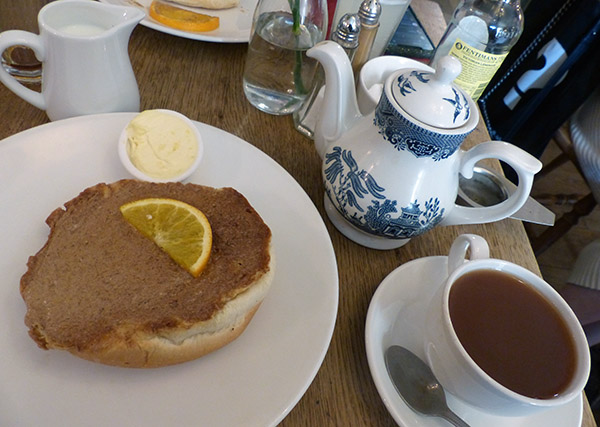
So, who is Sally Lunn, and how did she become famous through her Bath bun? Sally Lunn became a resident of Bath around 1680; she had fleed France during the persecution of the French Huguenots. In fact, many French Huguenots had come to Britain, with a large number setting up lives around Shoreditch and Brick Lane in London and starting silk weaving businesses. They were welcomed for their excellent skills in that trade.
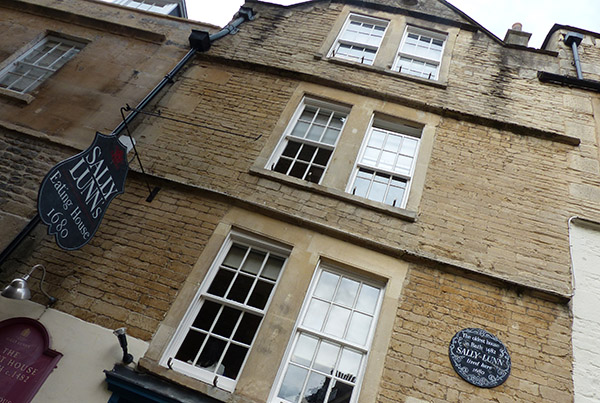
Sally started to work for a baker in Bath on Lilliput Alley in Bath, near the famous Bath Abbey. She introduced the baker to a style of French bread. The bun became popular and was served for breaskfasts and afternoon teas, which grew in popularity in Bath. Her original recipe for the bun was found with the house deed in a secret area behind a fireplace on the first floor in the 1930s.

The success of Sally Lunn's buns enabled the baker to change the wood burning oven (dating from the 1100s) to a coal-burning oven. This oven can be seen in the basement of the Sally Lunn restaurant, which is also a museum. This oven was used until the 1890s! The museum in the basement shows the making of the buns (with a mannequin) with the oven.

The museum in the cellar also contains remains of a Roman building (possibly an inn where travelers could stay) that stood in this place from around 200AD. Of course, Bath dates from before Roman times and was an important Roman town with Roman baths, which are located not far from this building. The site was later a monastary, which was re-purposed after Henry VIII dissolved the monastaries. In fact, the kitchen of this restaurant appears to be the kitchen of the old monastary. In short, this is a very old building.
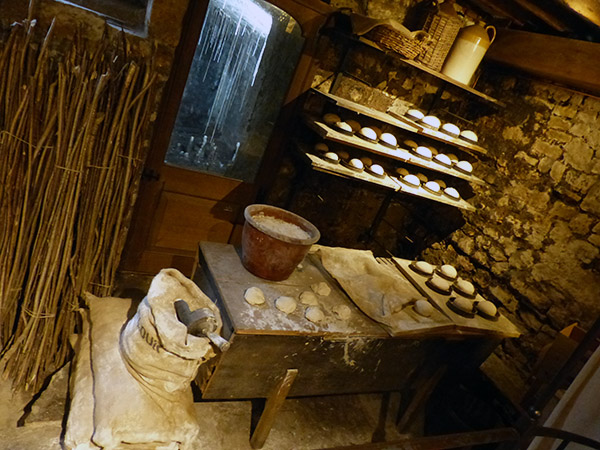
The cellar would have actually been the ground floor at one time, but flooding of cellars made the ground level rise up. One room at the back of the cellar is for cold storage and is a little cave with stalagmites and stalagtites forming on the floors and ceilings. There is also a pump here.
Moving on now to the restaurant itself, I did state earlier that the restaurant is now very busy compared with what I witnessed daily over ten years ago. Back then, I did not often see a queue of people waiting to eat, though tours would always stop by here. I arrived at Sally Lunn's at about 11:40, and I had to wait a good half an hour to get a table for two. The building is a narrow one that rises up, and I was shown to a seat on the first floor, but there were two floors above this.
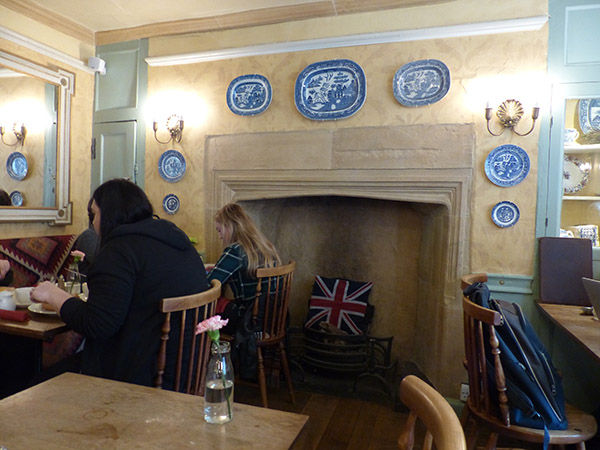
How can I describe a Sally Lunn bun / Bath Bun? The Bath Bun is not a London Bun, and others have tried to replicate it. It is probably best described as a brioche-style bread, but it is much lighter that a brioche and isn't really a heavy soft roll of bread. It is equally good as a savoury or sweet item in a meal. I tried it in both circumstances. The first was covered in butter and with a bowl of carrot soup, which accompanied it very well. The second was as a cream tea with a sweet cinnamon butter spread on top. Both versions were equally delicious.
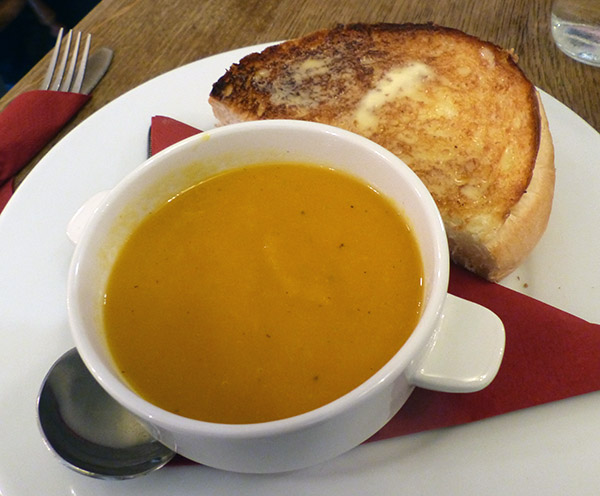
While eating, one of the large group tours visited to stop to chat about the restaurant and the bun. Even the tour groups in Bath are much larger than what they were just over years ago!
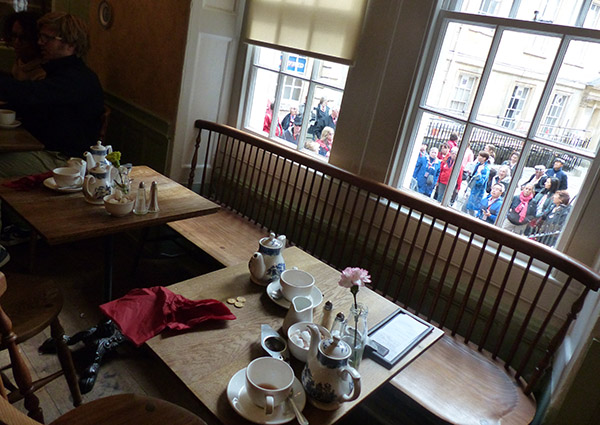
After lunch (and tea for dessert), I took a detour near Putney Bridge in Bath. This is one of my personal favourite most picturesque views in England. Bath always looks lovely in the fall, though it looks even more stunning in the sunlight and (in particular) the evening sun when it turns to a golden hue against the Bath stonework.

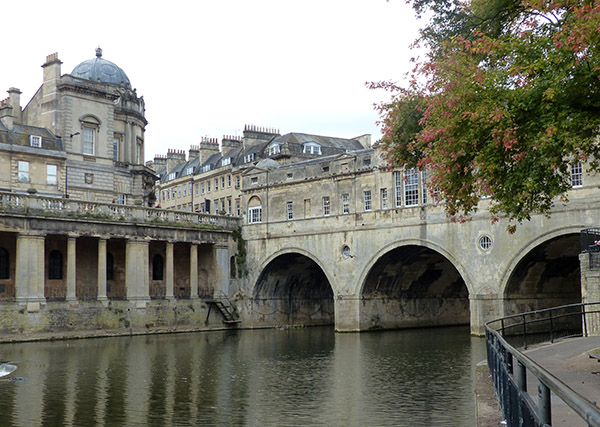
And that concludes my visit to Bath. This post dates from September, when I went to see Minerva's Owls of Bath Goodbye Event in the city. Do note that Sally Lunn's is open for breakfast and dinner, and in case the queue is too long, the basement (museum level) does have a little shop where visitors can buy the famous Bath Bun to take away in souvinir boxes, and a selection of spreads for it are included. According to the shop seller, the best way to serve the buns is slightly toasted on the grill.
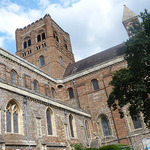
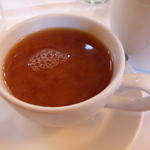

Leave a comment